Shango: Powerful Thunder God And Symbol Of Kingship Among Yoruba People Of West Africa
A. Sutherland - AncientPages.com - Kingship and weather are strongly associated with Yoruba mythology. Myths and legends of Yoruba say that the greatest warrior-king, Shango, became the god of thunder, lightning, and storms after he died.
 This staff is an emblem of Shango, the Yoruba god of thunder. It combines seemingly contradictory aspects of Shango-the idea that it is Shango who hurls thunderbolts to punish wrongdoers with the belief that he is generous, the giver of children, and the protector of twins. A female devotee kneels in worship while balancing on her head the double ax motif that symbolizes the god's thunderbolts. The axes have been carved into twin heads. As in many African cultures, beauty is linked with moral values-in this case, hard work. The success of the woman also reflects the hard work and achievement of her husband, who supports her generosity. Image credit: Cliff1066 - CC BY 2.0
This staff is an emblem of Shango, the Yoruba god of thunder. It combines seemingly contradictory aspects of Shango-the idea that it is Shango who hurls thunderbolts to punish wrongdoers with the belief that he is generous, the giver of children, and the protector of twins. A female devotee kneels in worship while balancing on her head the double ax motif that symbolizes the god's thunderbolts. The axes have been carved into twin heads. As in many African cultures, beauty is linked with moral values-in this case, hard work. The success of the woman also reflects the hard work and achievement of her husband, who supports her generosity. Image credit: Cliff1066 - CC BY 2.0
Among the Yoruba, he is generally known as an ancient king of Oyo and the grandson of Oduduwa, also revered today as the hero, warrior, leader, and father of the Yoruba race.
Shango – Most Powerful Nature God
In the beliefs of the Yoruba people of West Africa, Shango is the most powerful nature god. He is still celebrated in certain parts of the world. Shango has followers and priests responsible for burying anyone killed by lightning. They may also inspect property struck by lightning to find the thunderbolt.
His sanctuaries are decorated with statues of women or mothers and children. Shango has sole control over the thunder and presides at births. His followers believe he advocates justice. His anger reaches everyone who offends him.
He is usually portrayed with horns and a ram's head and holding a double ax. His wives are from three rivers: Oya (the Niger River), Oshun, and Oba. His favorite colors are red and white.
His name is believed to be derived from " shan, "to strike violently," and " go, "to bewilder," and refers to peals of thunder, which are supposed to be produced by violent blows.
Shango Was Once An Earthly King
He was once an earthly king noted for his authoritarian rule among his people. It is said that thunder and lightning shook the earth on the day he was born. Legend has it that Shango was a violent and cruel king whom his people so hated that he finally decided to hang himself in the forest.
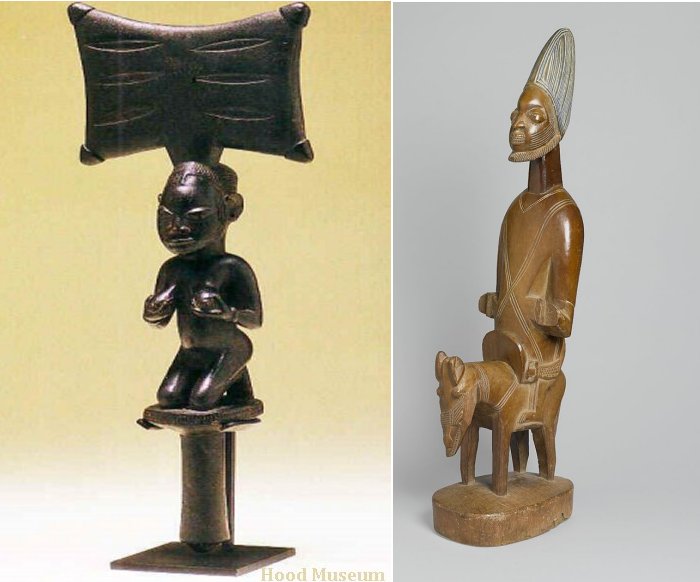 Left: Shango, thunder god of the Yoruba. Image credit: Hood Museum via clarku.edu; Right: Figure of Shango on Horseback. by Yoruba carver Toibo. Image credit: CC BY 3.0
Left: Shango, thunder god of the Yoruba. Image credit: Hood Museum via clarku.edu; Right: Figure of Shango on Horseback. by Yoruba carver Toibo. Image credit: CC BY 3.0
Another variant of the Shango myth also says that he never died but instead ascended to heaven to continue using his terrible powers as the god of thunder, lightning, and storms.
He had both enemies and worshipers who built many shrines and temples dedicated to him after he died.
Officially, Shango's priests used to say that Shango ascended to heaven, but the Yoruba did not want to believe it. As lightning and storms did not cease after Shango's death, the Yoruba held Shango responsible. He sustained his terrifying powers in the afterlife and continued using his double axe to induce lightning storms that devastated the ground and shook the earth.
The Yoruba people believe that Oya, the goddess of the River Niger, often accompanied Shango. Oya was responsible for powerful winds and gusts.
Shango Has Counterparts In Beliefs Of Other Cultures
Storms, thunder, and lightning were often associated with the highest or war gods. In many cultures, thunder was believed to be a creative force and a precursor to a life-giving and fertilizing rain.
The Greek god Zeus had a mighty thunderbolt forged by Hephaestus, the sky-dwelling blacksmith, and vajra, a powerful thunderbolt throwing light belonging to Indra. Meanwhile, 'dorje' was comparable to it in Tibet beliefs. Mjölnir (Mjolnir) is Thor's terrible ax hammer in Norse mythology. In the Inca's beliefs, Catequil (or Apocatequil), the god of thunder and lightning, was believed to create thunder by striking the clouds with his sacred spear and a mighty club.
 Shango god. Image credit: National Museum of Brazil, Rio de Janeiro. CC BY-SA 4.0
Shango god. Image credit: National Museum of Brazil, Rio de Janeiro. CC BY-SA 4.0
Tradition has it he created so much damage on the ground that terrified Inca sacrificed their children to calm the god's fury.
Storms - Manifestation Of Shango's Wrath
In his 'Traditional Offa Yoruba Religion in Nigeria' T.P. Sunday writes: "Thus, it is not surprising that thunder is seen by the Yoruba as a manifestation of the divine wrath as this aspect of Shango's life is noted for its violent storms, especially in Yorubaland considered to be "the second region in the world for lightning frequency, consisting of "there sounding booms, the deafening sound of the thunderclaps; the blinding, dazzling, crisscrossing; end to end flashes of the lightning" all of which contribute to and affirm the sense of divine presence in the storm; such that the following song is reported as addressed to Shango:
"O Shango, thou art the master!
Thou takest in thy hand the fiery stones,
To punish the guilty!
To satisfy thy anger!
Everything they (the stones) strike is destroyed,
The fire eats up the forest,
The trees are broken down, And all things living are slain…"
Regarding political sense, it may be true that Shango is the great national divinity of the Yoruba in general, although not in the ultimate religious sense..."
Written by – A. Sutherland - AncientPages.com Senior Staff Writer
Updated on Oct 24, 2023
Copyright © AncientPages.com All rights reserved. This material may not be published, broadcast, rewritten or redistributed in whole or part without the express written permission of AncientPages.com
Expand for referencesReferences:
Bouquegneau C, Rakov V. How Dangerous Is Lightning?
Johnson, S, History of the Yorubas
Sunday P. T. Traditional Offa Yoruba Religion in Nigeria
More From Ancient Pages
-
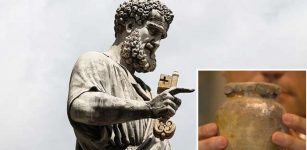 Are Bones Of Apostle Peter Hidden Inside A 1000-Year-Old Roman Church?
Archaeology | Sep 16, 2017
Are Bones Of Apostle Peter Hidden Inside A 1000-Year-Old Roman Church?
Archaeology | Sep 16, 2017 -
 Unusual Viking Secret Hidden Underground In California Reminds Of A Similar Discovery In Colorado
Featured Stories | Sep 12, 2024
Unusual Viking Secret Hidden Underground In California Reminds Of A Similar Discovery In Colorado
Featured Stories | Sep 12, 2024 -
 Pilot Mountain Is Home To A Mysterious Underground Civilization – Cherokee Legend Tells
Featured Stories | Apr 30, 2021
Pilot Mountain Is Home To A Mysterious Underground Civilization – Cherokee Legend Tells
Featured Stories | Apr 30, 2021 -
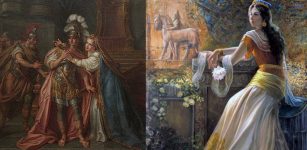 Rhodogune Of Parthia Refused To Bath And Comb Her Hair Until She Subdued The Rebels
Featured Stories | Oct 7, 2019
Rhodogune Of Parthia Refused To Bath And Comb Her Hair Until She Subdued The Rebels
Featured Stories | Oct 7, 2019 -
 Controversial Discovery Of 5,7-Million-Year-Old Footprints On Crete Could Re-Write History Of Human Evolution
Archaeology | Sep 5, 2017
Controversial Discovery Of 5,7-Million-Year-Old Footprints On Crete Could Re-Write History Of Human Evolution
Archaeology | Sep 5, 2017 -
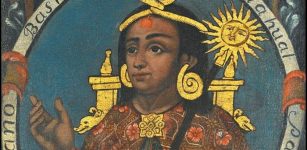 Story Of Atahualpa: The Last Emperor Of The Inca Empire
Featured Stories | Feb 4, 2016
Story Of Atahualpa: The Last Emperor Of The Inca Empire
Featured Stories | Feb 4, 2016 -
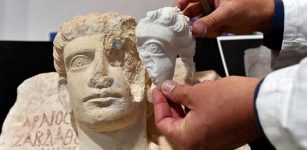 Two Rare Funerary Busts Rescued From Destruction In Palmyra – Restored In Italy
Archaeology | Feb 25, 2017
Two Rare Funerary Busts Rescued From Destruction In Palmyra – Restored In Italy
Archaeology | Feb 25, 2017 -
 On This Day In History: Battle of Castillon Ended ‘Hundred Years’ War – On July 17, 1453
News | Jul 17, 2016
On This Day In History: Battle of Castillon Ended ‘Hundred Years’ War – On July 17, 1453
News | Jul 17, 2016 -
 Mystery Of The Bloody Island Poveglia – A Place Of Hell In Ancient And Modern Times
Featured Stories | Jan 21, 2016
Mystery Of The Bloody Island Poveglia – A Place Of Hell In Ancient And Modern Times
Featured Stories | Jan 21, 2016 -
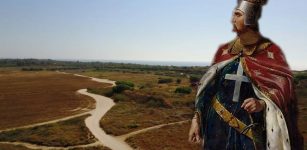 Battle Of Arsuf – Site Where King Lionheart And The Crusaders Defeated Saladin – Found
Archaeology | Aug 1, 2020
Battle Of Arsuf – Site Where King Lionheart And The Crusaders Defeated Saladin – Found
Archaeology | Aug 1, 2020 -
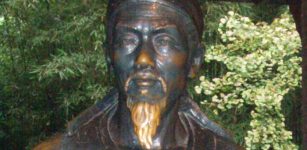 On This Day In History: Du Fu – ‘The Sage of Poetry’ Was Born – On Feb 12, 712
News | Feb 12, 2017
On This Day In History: Du Fu – ‘The Sage of Poetry’ Was Born – On Feb 12, 712
News | Feb 12, 2017 -
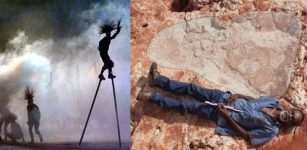 Aboriginal Creation Story Of Marala Was True – World’s Largest Dinosaur Footprints Confirm Ancient Creation Myth
Archaeology | Mar 29, 2017
Aboriginal Creation Story Of Marala Was True – World’s Largest Dinosaur Footprints Confirm Ancient Creation Myth
Archaeology | Mar 29, 2017 -
 Hogmanay: Scotland’s New Year Celebration Inherited From The Vikings
Ancient Traditions And Customs | Dec 31, 2024
Hogmanay: Scotland’s New Year Celebration Inherited From The Vikings
Ancient Traditions And Customs | Dec 31, 2024 -
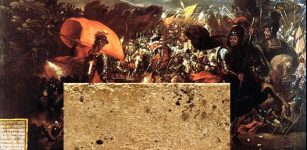 Aztec Treasure: ‘Yew Of Gold’ Found 39 Years Ago Originates From Spanish Plunder During ‘Sad Night’ In 1520
Archaeology | Jan 12, 2020
Aztec Treasure: ‘Yew Of Gold’ Found 39 Years Ago Originates From Spanish Plunder During ‘Sad Night’ In 1520
Archaeology | Jan 12, 2020 -
 Nine 1,400-Year-Old Coins Belonging To Christian Pilgrims Found On The Highway To Jerusalem
Archaeology | Mar 24, 2017
Nine 1,400-Year-Old Coins Belonging To Christian Pilgrims Found On The Highway To Jerusalem
Archaeology | Mar 24, 2017 -
 Bronze Age DNA Shows Direct Genetic Link To Current Inhabitants Of Southern Poland
Archaeology | May 4, 2020
Bronze Age DNA Shows Direct Genetic Link To Current Inhabitants Of Southern Poland
Archaeology | May 4, 2020 -
 8th Century Sculpture Of Lord Vishnu Belonging To Pandya Dynasty – Unearthed
Archaeology | Sep 16, 2020
8th Century Sculpture Of Lord Vishnu Belonging To Pandya Dynasty – Unearthed
Archaeology | Sep 16, 2020 -
 Mysterious Deaths Around Empress Cixi – Cruel Tyrant Or Victim Of Propaganda?
Featured Stories | Apr 9, 2018
Mysterious Deaths Around Empress Cixi – Cruel Tyrant Or Victim Of Propaganda?
Featured Stories | Apr 9, 2018 -
 Ancient Gymnasium Discovered In Egypt
Archaeology | Nov 6, 2017
Ancient Gymnasium Discovered In Egypt
Archaeology | Nov 6, 2017 -
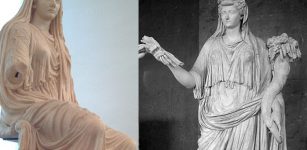 World’s First Diva Was Livia – Wife Of Emperor Augustus
Ancient History Facts | Aug 2, 2016
World’s First Diva Was Livia – Wife Of Emperor Augustus
Ancient History Facts | Aug 2, 2016
